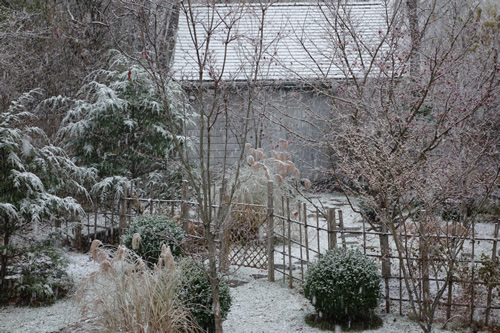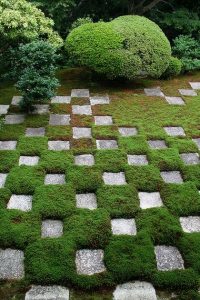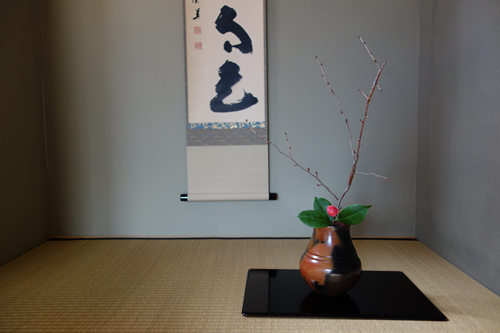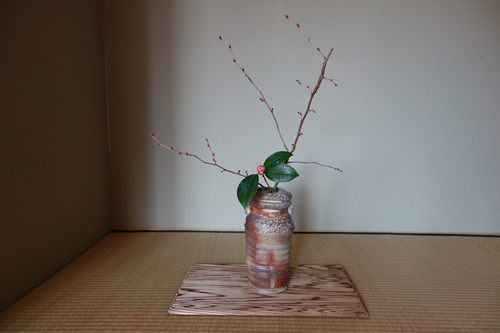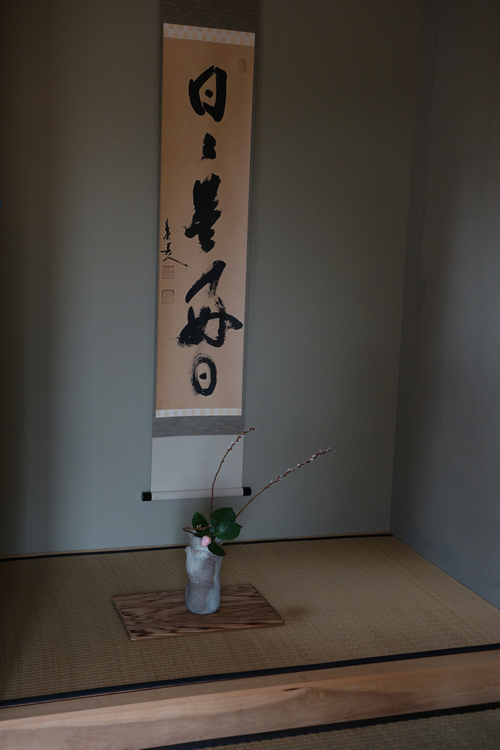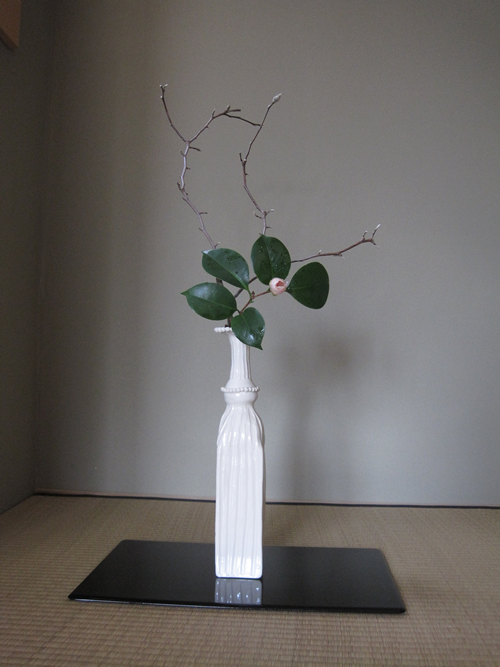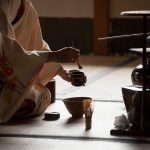Moss obsession
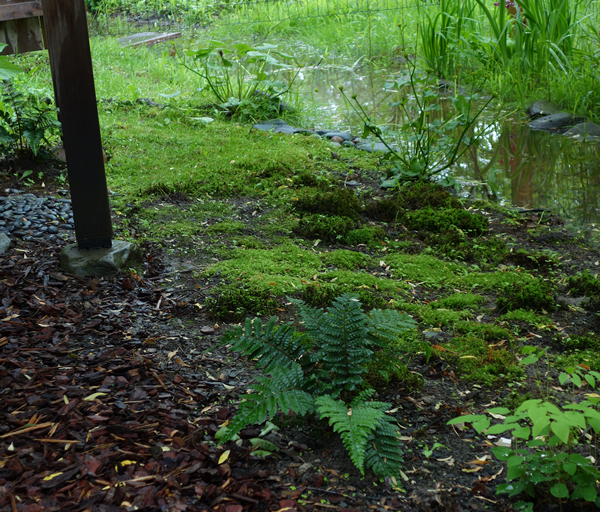
By the side entrance to the Tea House is a flood run-off ditch that fills with water in the spring and fall. It’s in deep shade and I’ve become obsessed with cultivating moss in this small area.
Last spring I ordered a 6 foot square sheet of moss from Moss Acres. The moss came packed in a box like a thinly folded carpet which I carefully spread over my bare mud patch. The spring was short and during the summer we went into a deep drought. The moss didn’t make it.
Early this spring I noticed there was some native moss creeping in from the west side of Tea House. What’s better than cultivating something that wants to grow naturally?
I went around my garden and found two other species of moss hidden behind trees and scattered in soft cushions about the garden. With a forked trowel I scooped up thin layers and placed them in the muddy Tea House entrance area.
So far the weather this spring has been fabulous for the moss. It has rained and rained and been mildly cool. I ‘think’ the moss is liking it. I ‘think’ it’s spreading. I hope so. I love this area. It has a quiet and profound feel as if the moss were exhaling something pure and lovely.
The challenge will be this summer when it gets hot and dry. Moss doesn’t like to be watered. Instead it likes fine mist and only rainwater. I don’t have a misting system and the Tea House is too far away for me to dig one in. I can only provide shade and regular watering from the tap.
Perhaps this year the rain will be more plentiful than last, and the moss, which naturally grows here, will establish itself strongly enough to withstand the vagaries of our weather. I’ve planted some nice companions for it: epimedium, ferns, marsh marigold.
Right now it’s a beautiful gem of a place.
Spring is fleeting
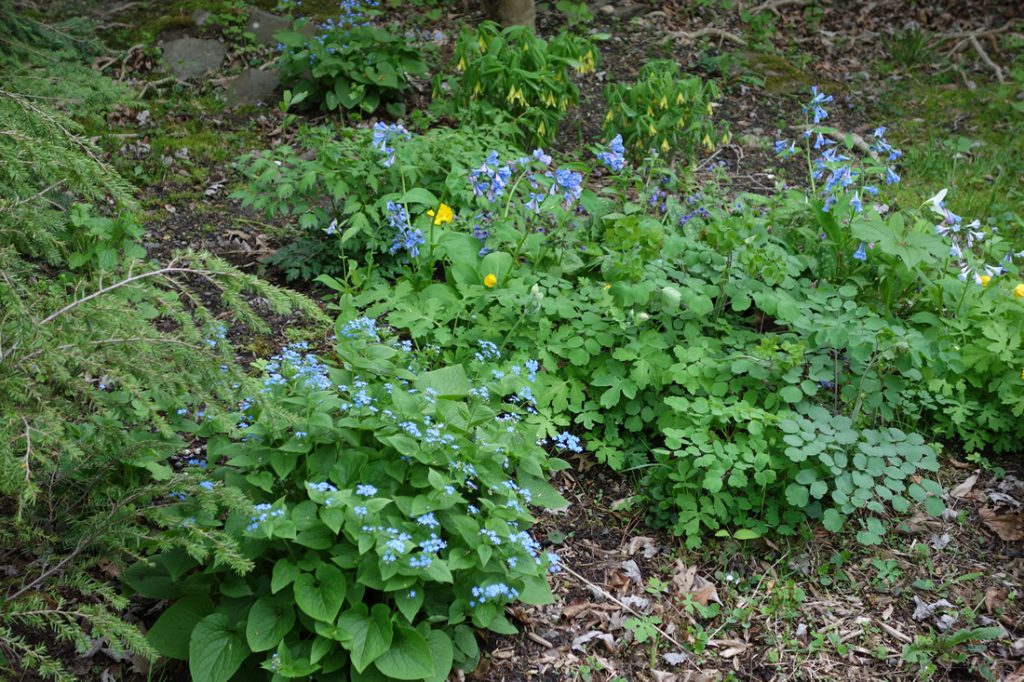
I’ve planted in some wonderful pockets of shade and this is the time of year when the spring ephemerals start to appear. The colors seem to be a range of blue and yellow with Brunnera, Virginia Bluebells, and Celdon Poppy. Soon a white Trillium will show up. In the far back are clumps of Uvularia grandiflora (large-flowered bellwort). I love these flowers.
Spring is an amazing time here in the northeast. After a hard winter I am amazed when these tender flowers peak through the earth and start to bloom. Their bloom is short and fleeting, but appreciated even more because of it.
After the rain
First winter storm
The first winter storm has arrived. The garden has been swept clean of leaves and we’re ready for the long, cold months ahead. The winter garden is very beautiful with just the first dusting of snow. It’s at this time that we see clearly how the evergreens and fence give the garden its structure. By mid-summer they will have faded into the background hidden by lush ferns, grasses, shrubs, and trees.
It’s a small garden and I had endless design possibilities. I could have created a formal English style garden or even modeled the backyard on my favorite Japanese designer Mirei Shigemori’s checkerboard moss garden. But the essence of this garden is contemplative. It should feel as though one were walking on a path to a rustic retreat in the mountains.

A formal English garden would fit in my backyard but the style would change the entire feeling of the space.
The last of the Camellias
Winter is over and so too are Camellias. They bloom from December into early April. Here are the last blooms from my plants which I overwinter in a cold room in my house.

